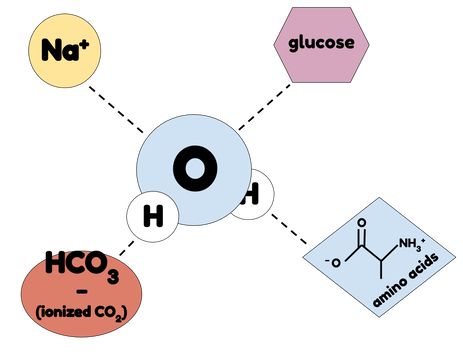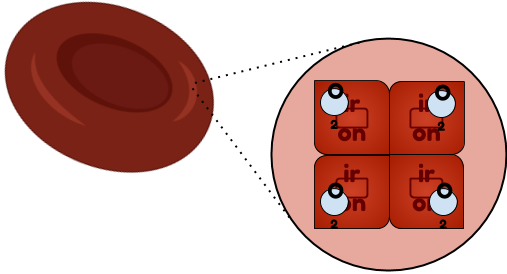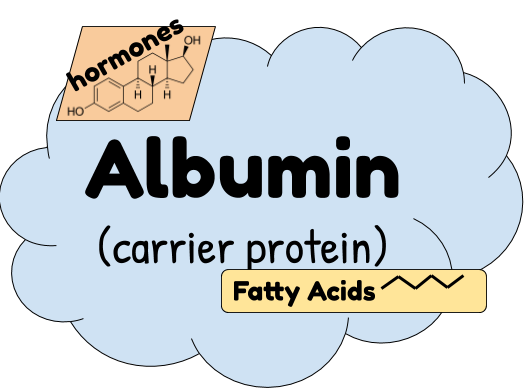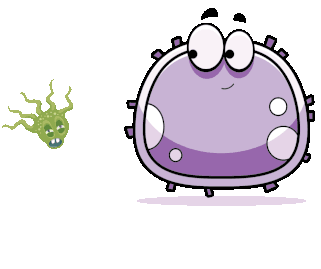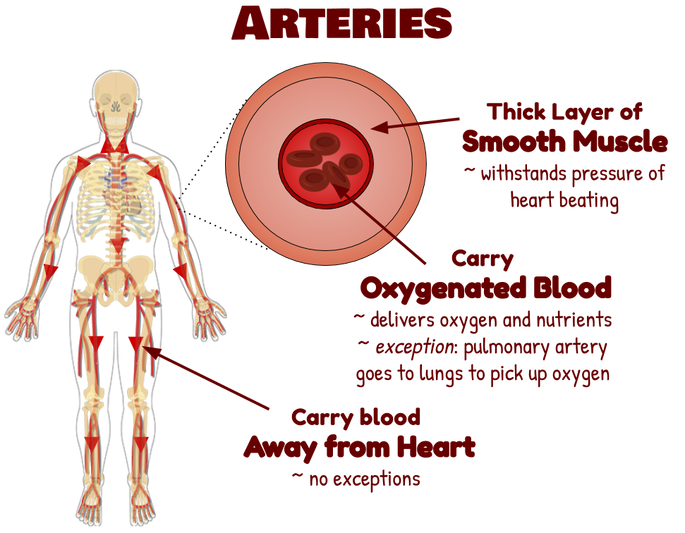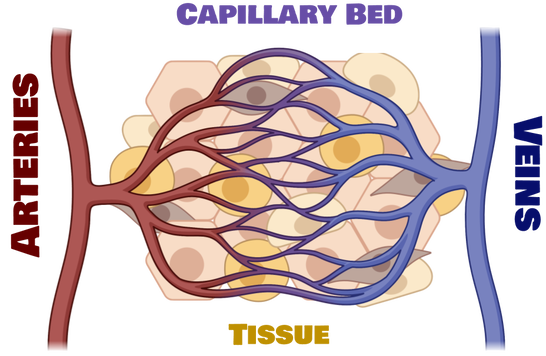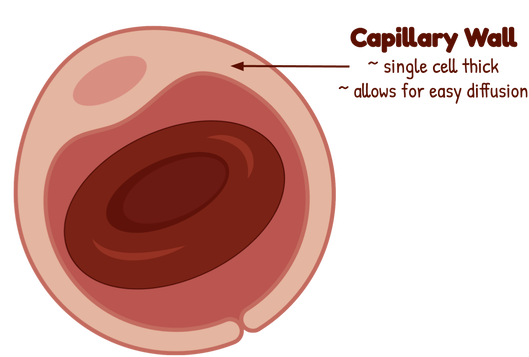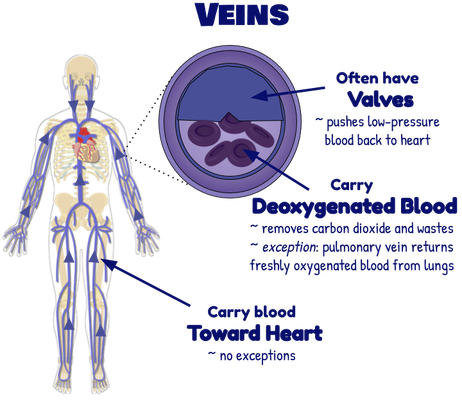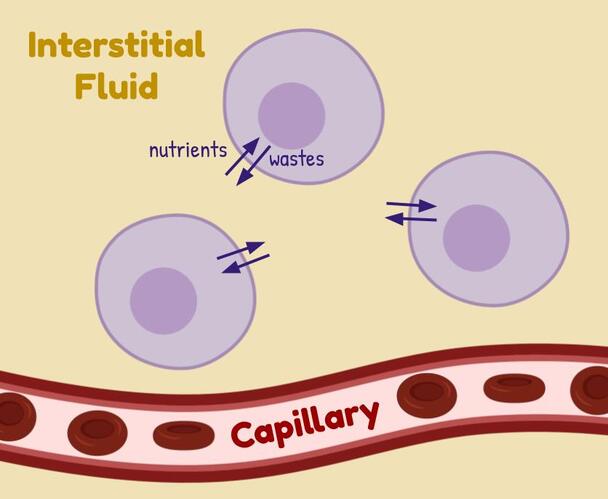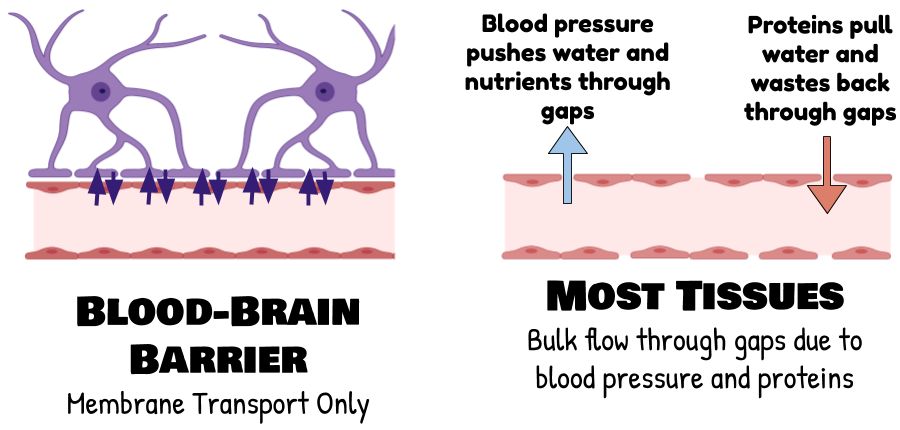blood and blood vessels
Why do we need blood?
Your body has tens of trillions of cells in it. There are big cells, little cells, cells that will last your entire life, and cells that will only live for a few days. There are cells that make your muscles move, there are cells that take up your food, there are cells that help you breathe, there are cells that make you pee, and there are cells that tell all the other cells what to do. There are even cells that can become many of these other types of cells. All this diversity is great, and having so many different cell types and so many total cells by number all in one spot working together toward a larger purpose is exactly what allows something as complicated and beautiful as a human being to exist.
It is also a logistical nightmare. Think about it: Tens of trillions of cells that all need food. Tens of trillions of cells that need oxygen. Tens of trillions of cells that make waste. Tens of trillions of cells that need water. Cells working together that need to be able to send signals to each other. Cells that need to be able to travel in the body to do their jobs right. Cells that are all terribly, terribly crowded and just need basic, life-sustaining resources.
That’s where your circulatory system comes into play. Your circulatory system includes your heart, which, as you may know, is responsible for pumping blood through your body, as well as your blood vessels. Your blood vessels spread out to reach even the tiniest corners of your body, delivering oxygen and nutrients to every last cell in your body. Then, these blood vessels act like a waste-pickup team, taking away carbon dioxide and other waste products from these cells so that they don’t get harmed. Finally, if anything needs to be anywhere—say, an immune cell needs to get to the site of an infection, or a signalling molecule (hormone) needs to get a message to its target—the blood vessels can carry that thing where it needs to go. Every cell gets food. Every cell gets oxygen. Every cell gets water. Waste gets taken away. Cells can communicate with each other. Cells can travel. Every last terribly, terribly crowded cell gets the resources that it needs, and you get to live.
It is also a logistical nightmare. Think about it: Tens of trillions of cells that all need food. Tens of trillions of cells that need oxygen. Tens of trillions of cells that make waste. Tens of trillions of cells that need water. Cells working together that need to be able to send signals to each other. Cells that need to be able to travel in the body to do their jobs right. Cells that are all terribly, terribly crowded and just need basic, life-sustaining resources.
That’s where your circulatory system comes into play. Your circulatory system includes your heart, which, as you may know, is responsible for pumping blood through your body, as well as your blood vessels. Your blood vessels spread out to reach even the tiniest corners of your body, delivering oxygen and nutrients to every last cell in your body. Then, these blood vessels act like a waste-pickup team, taking away carbon dioxide and other waste products from these cells so that they don’t get harmed. Finally, if anything needs to be anywhere—say, an immune cell needs to get to the site of an infection, or a signalling molecule (hormone) needs to get a message to its target—the blood vessels can carry that thing where it needs to go. Every cell gets food. Every cell gets oxygen. Every cell gets water. Waste gets taken away. Cells can communicate with each other. Cells can travel. Every last terribly, terribly crowded cell gets the resources that it needs, and you get to live.
the composition of blood
As we just described, blood has a few important functions:
Because blood has a bunch of important functions, it has a bunch of important structures that help it to carry out its functions:
Water dissolves many substances that are carried in blood. Carbon dioxide, for example, is converted into bicarbonate ion, which is transported easily by water in blood. Ions, glucose, and amino acids are also dissolved easily in water.
- Transport oxygen and other nutrients to cells
- Transport carbon dioxide and other waste products from cells
- Carry messages (e.g., hormones) among cells
- Fight disease
Because blood has a bunch of important functions, it has a bunch of important structures that help it to carry out its functions:
Water dissolves many substances that are carried in blood. Carbon dioxide, for example, is converted into bicarbonate ion, which is transported easily by water in blood. Ions, glucose, and amino acids are also dissolved easily in water.
Hemoglobin is packaged in red blood cells. Hemoglobin is a specialized protein that uses iron to carry oxygen.
Carrier proteins transport the things that aren’t easily dissolved in water (and even some things that dissolve just fine in water, but could still use a helping hand). Hemoglobin is one carrier protein. Albumin is another important one, which transports many hormones and fatty acids (as well as a bunch of other things) in the blood.
White blood cells are disease-fighting cells that travel in the bloodstream. They’re on constant surveillance for anything that looks not-quite-right, so that they can eliminate the threat. We’ll talk a lot more about white blood cells when we talk about the immune system.
blood vessels
All this blood doesn’t just get a free-for-all to go anywhere in the body whenever it wants. It is confined to an organized network of arteries, veins, and capillaries. These are collectively referred to as blood vessels, and their job is to make sure blood gets exactly where it needs to go.
Arteries
The blood vessels that carry blood away from your heart and to your body are called arteries. Because your heart is such a powerful organ, when it pumps blood out, it pushes really hard to keep everything moving. As a result, the pressure in your arteries is high compared to the pressure in your veins or capillaries. Arteries need to be pretty muscular to withstand all that pressure. For that reason, their walls include a thick layer of smooth muscle. As you’ve learned, smooth muscle contracts a little differently from skeletal muscle and is responsible for involuntary body functions.
The blood vessels that carry blood away from your heart and to your body are called arteries. Because your heart is such a powerful organ, when it pumps blood out, it pushes really hard to keep everything moving. As a result, the pressure in your arteries is high compared to the pressure in your veins or capillaries. Arteries need to be pretty muscular to withstand all that pressure. For that reason, their walls include a thick layer of smooth muscle. As you’ve learned, smooth muscle contracts a little differently from skeletal muscle and is responsible for involuntary body functions.
|
Because arteries are going to the body, they usually carry oxygenated blood, or blood that has a fresh oxygen supply. (The one exception to this is when blood is pumped out of the heart to the lungs in order to go get oxygen). We often depict oxygenated blood as bright red in drawings and deoxygenated blood, which is blood that has already delivered oxygen to tissues and is now carrying a lot of carbon dioxide and waste, as blue. Oxygenated blood is actually bright right, but deoxygenated blood isn’t actually blue. It is more of a dark maroon color (but, it looks kind of blue when you’re looking through your skin, because of the way the light travels through skin).
|
Capillaries
Capillaries are the network of tiny blood vessels that infiltrate tissue and supply blood to all of the cells. Arteries split into increasingly smaller blood vessels, called arterioles, before eventually becoming the tiny little capillaries. These capillaries then gather back together, making increasingly larger blood vessels, called venules, until they become veins.
Capillaries are the network of tiny blood vessels that infiltrate tissue and supply blood to all of the cells. Arteries split into increasingly smaller blood vessels, called arterioles, before eventually becoming the tiny little capillaries. These capillaries then gather back together, making increasingly larger blood vessels, called venules, until they become veins.
Transfer of oxygen and carbon dioxide, as well as nutrients and other wastes, with the tissue occurs at the capillary bed. For this reason, capillaries have very thin, single-cell–thick walls to allow diffusion to easily occur. The inside of the capillary is only barely large enough to fit through a single red blood cell at a time.
Veins
The blood vessels that carry blood to your heart are called veins. Try flexing your wrist - can you see those light blue lines underneath your skin? Those are veins. Veins are much thinner than arteries; the blood pressure inside of them isn’t as high, so they don’t need to be as muscular to withstand that pressure. They do, however, often have tiny little valves that help to push blood back up toward the heart. The action of skeletal muscle (for example, when you fidget or go for a walk) also helps to push blood back toward the heart.
This video demonstrates the action of the valves and skeletal muscle in pushing blood back toward your heart:
You might be wondering what happens to all the wastes we just picked up from tissues. Many of these get detoxified as blood passes through the liver, and many others get excreted through the kidneys as blood passes through them.
Diffusion and bulk flow in capillaries
In between the arteries and the veins is where the real magic happens: The blood gives its oxygen and nutrients to the cells of the body, picking up waste in return. This happens in tiny, single-cell thick blood vessels called capillaries.
The exchange of nutrients and wastes with the surrounding fluid happens by membrane transport—the same membrane transport involving passive diffusion, facilitated diffusion (including osmosis), and active transport that we learned about when we learned about cells. How that nutritious fluid gets out of capillaries and into the surrounding tissue can vary, though.
The exchange of nutrients and wastes with the surrounding fluid happens by membrane transport—the same membrane transport involving passive diffusion, facilitated diffusion (including osmosis), and active transport that we learned about when we learned about cells. How that nutritious fluid gets out of capillaries and into the surrounding tissue can vary, though.
Sometimes, the cells that make up the capillary wall are held really tightly together so that all solute passage is really tightly controlled and has to go through membrane transport at the capillaries and then against the tissues. This happens when the surrounding environment of the cells is just as precious as the internal environment of the cells, like in the brain.
For the most part, though, we prefer a “quick and dirty” approach to getting stuff out of capillaries and into the surrounding tissue, where it can get into cells. In this case, water and many of its small solutes, like glucose and amino acids, don’t really go through the membranes of the capillary: They just get forced out between the gaps of the cells that make up the capillary, and the extra security of membrane transport is left up to individual cells. That fluid then transports in bulk back into the venous end of the capillary, where pressure is lower. This is called bulk flow.
For the most part, though, we prefer a “quick and dirty” approach to getting stuff out of capillaries and into the surrounding tissue, where it can get into cells. In this case, water and many of its small solutes, like glucose and amino acids, don’t really go through the membranes of the capillary: They just get forced out between the gaps of the cells that make up the capillary, and the extra security of membrane transport is left up to individual cells. That fluid then transports in bulk back into the venous end of the capillary, where pressure is lower. This is called bulk flow.
This video gives a quick overview of how blood flow at most capillaries—bulk flow—is different than the tightly-regulated flow of blood at the blood-brain barrier:
This video also does a good job of explaining the difference between these two types of flow:
Summary
You should understand:
If you’d like a deeper dive into the composition of blood, this video gives a good overview:
- That blood transports many things throughout the body, including oxygen, carbon dioxide, nutrients, wastes, hormones, and immune cells.
- That arteries carry blood to the body from the heart. They have high pressure, so they need thick walls of smooth muscle to withstand that pressure.
- That veins carry blood to the heart from the body. They have low pressure, so they have valves to help push blood back toward the heart.
- That capillaries are the site of exchange between blood and tissues. They are very thin, only one cell thick, so that diffusion can occur easily.
- That capillary exchange sometimes happens through regular membrane transport, especially at tightly regulated barriers like the blood-brain barrier, and often happens through bulk flow through gaps in the capillary walls.
If you’d like a deeper dive into the composition of blood, this video gives a good overview:
Learning Activity
Contributors: Megha Kori, Emma Moulton
Some images made using biorender.com
Some images made using biorender.com
